DjangoBooks.com
Welcome to our Community!
Categories
- 17.9K All Categories
- 396 General
- 257 Welcome
- 10 Archtop Eddy's Corner
- 74 CD, DVD, and Concert Reviews
- 29 FAQ
- 9 Gypsy Jazz Italia
- 17 Photos
- 24 Gypsy Picking
- 3 Unaccompanied Django
- 1 Pearl Django Play-Along Vol.1
- 1 Gypsy Fire
- 21 Gypsy Rhythm
- 552 Gypsy Jazz University - Get Educated
- 104 Gypsy Jazz 101
- 176 Repertoire
- 128 History
- 88 Technique
- 39 Licks and Patterns
- Daniel Givone Manouche Guitare Method Users Group
- 17 Eddie Lang Club
- 1K Gypsy Jazz Gear
- 648 Guitars, Strings, Picks, Amps, Pickups and Other Accessories
- 316 Classifieds
- 36 Recording
- 38 Other Instruments
- 17 Violin
- 3 Mandolin
- 6 Accordion
- 3 Bass
- 9 Woodwinds
- 197 Gypsy Jazz Events
- 78 North America
- 81 Europe
- 38 International
In this Discussion
Who's Online 0
BYO - only a little way to go now!
-
So, we've only got to glue the neck, the fingerboard, the wedge between fingerboard and soundboard and fret the fingerboard..
Wondering what 'order' to approach these tasks in?
Benefits / disadvantages to doing it one way or the other??
Any pitfalls anyone knows to avoid :D ?
Again, many thanks friends.
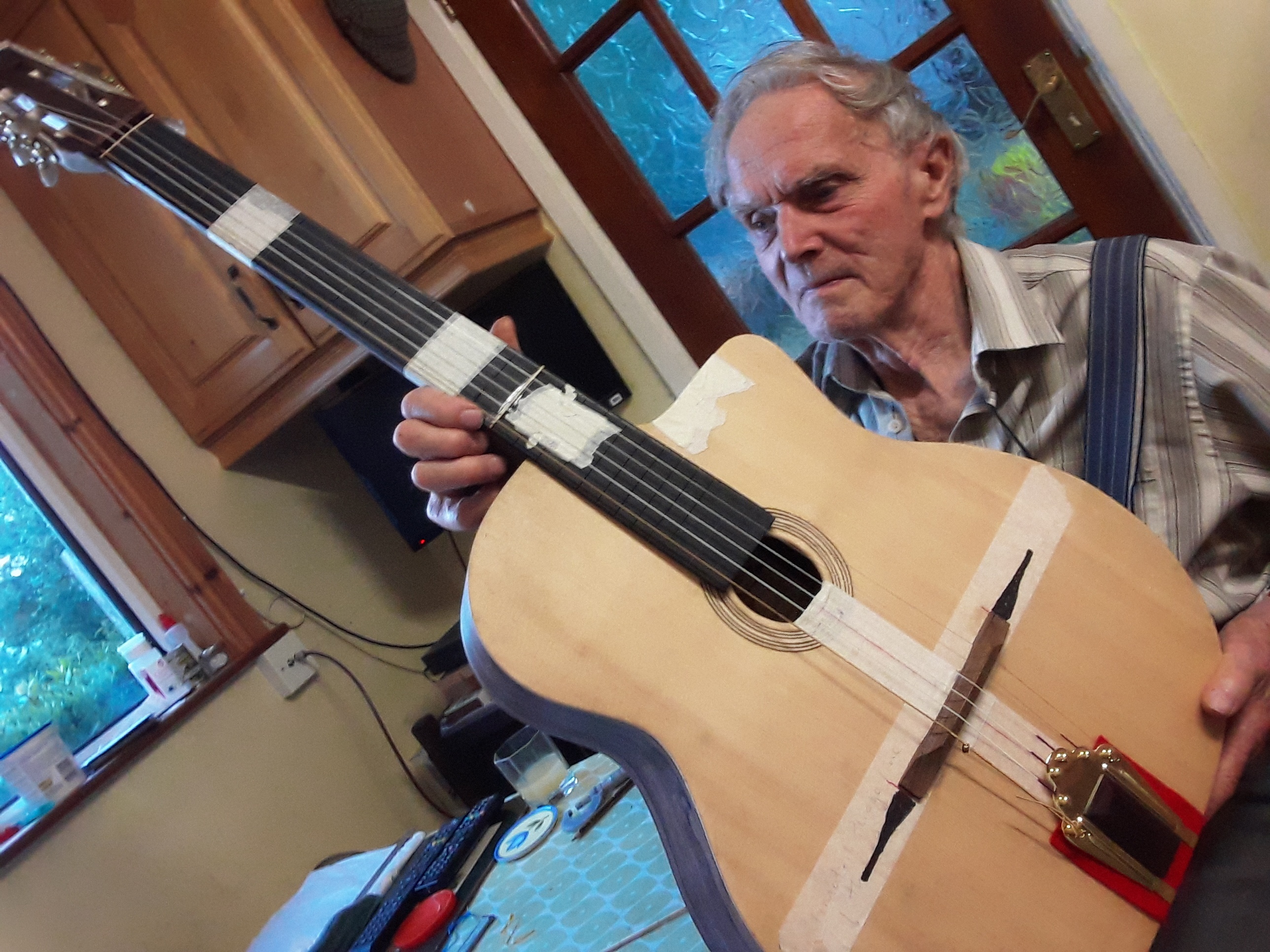
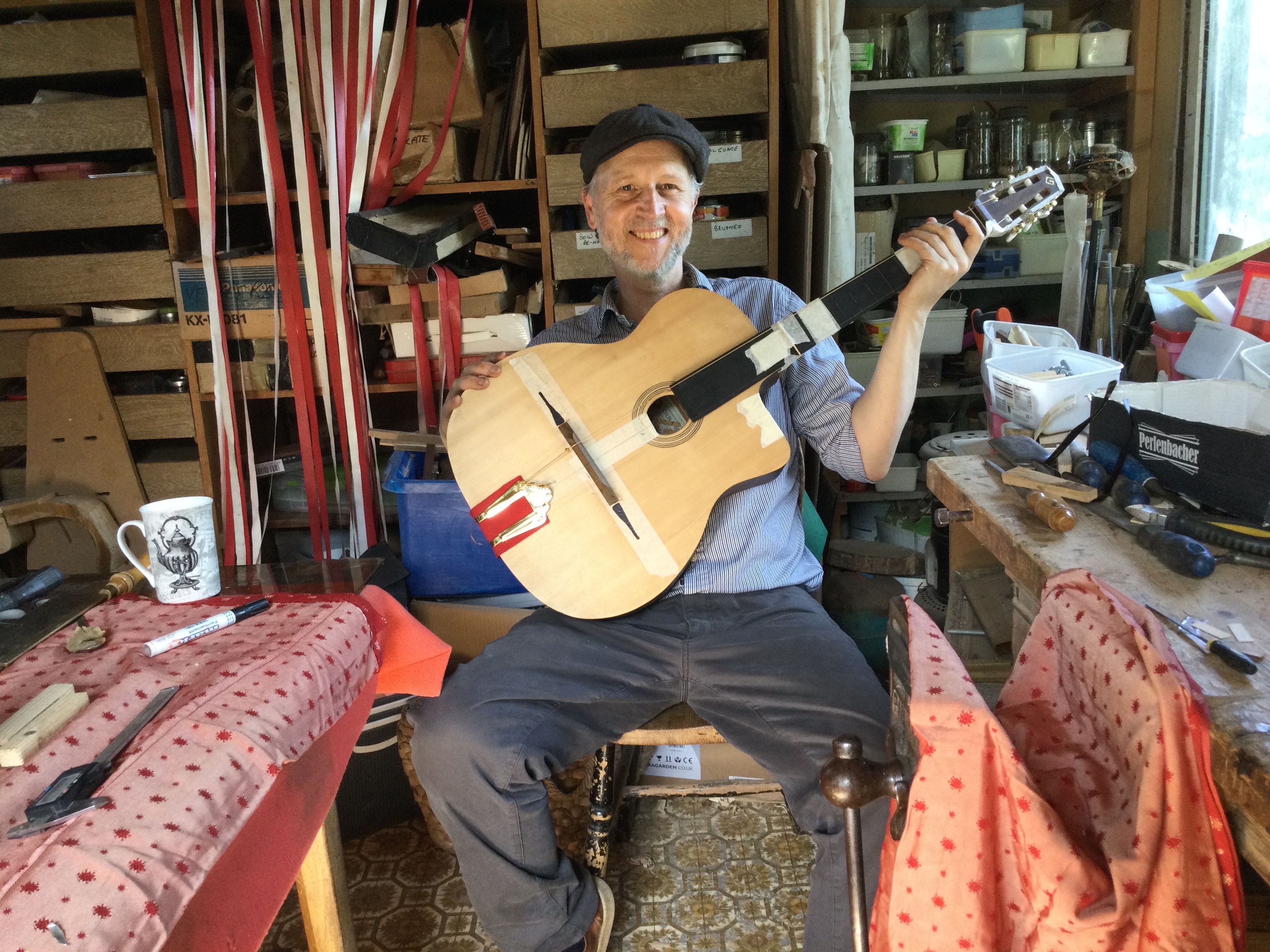

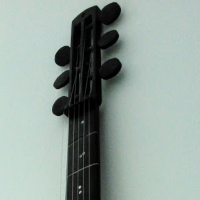
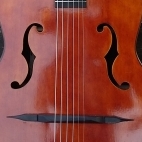

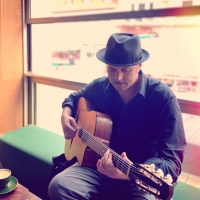









Comments
IDK how everyone does it but I glue the fingerboard to the neck. Then fret the neck but not the part of the fingerboard that extends over the body. Then I "dry fit" the neck and taper shim (wedge) to the body (shim the dovetail joint if necessary). Make sure the dovetail just tightens perfectly as you get the fingerboard/taper shim to mate flush up against the sound board. Next I glue on the taper shim to the bottom of the fingerboard extension once I know I have the dovetail perfect. Next I glue up the neck to the body and let that cure up at least a couple days before I carefully fret the part over the body.
BTW, what is all the tape for? Just holding things together for the dry fit?
Thanks Bones!
The tape is for 1. keeping us aligned to the 'centre' line through the body (without having to pencil the wood). 2. holding the fingerboard on the neck temporarily 'cos spots of hide glue take too long to grab when you want to put it on and take it off numerous times.. and 3. when we were trying to set the neck angle we were using the bridge height, a straight edge and an extension from the fingerboard with a small block of wood on the end of it equivalent to the height of the 'frets + action' to rest on the bridge, it was going to be helpful if the bridge didn't keep falling off so I 'hide-glued' it onto the masking tape! (the lower edge of that strip of masking tape was also making the pliage line more visible at a glance).
it's been loads of fun making up solutions to little challenges on the fly!
Oh, and we were also using toothpicks as frets!! :D
Bones, can I ask why you leave out fretting the overhang until later?
we understand that there's a chance of bowing the fingerboard slightly as frets go in - is it because of that? (i.e. that having the fingerboard glued down first to the [hopefully] dead flat path of neck + wedge helps prevent that?)
also, we're a bit nervous about fretting that bit when it's on the guitar because of the potential for damaging mishaps!
another thing: we don't have a clamping caul.. is it workable to use the radiused sanding block we made to clamp them down? is that preferable to malleting? or should we expect to be doing a bit of both?
(we are going to use your tip to put a spot of PVA in the slots to tighten the grip around the tang)
thanks again!
Frets go very last for me after everything is assembled. Very hard to keep the fingerboard level otherwise. If you find Shelley Park on Facebook you'll be able to see a video of her fretting - also after everything is done. Worth a watch.
A small caveat - be very careful removing tape from that spruce. It does tend to pull out tiny strips that make a mess of a nice smooth top.
The fingerboard extension is so compliant before it is glued onto the body that I just figured it would bend into a curve if I installed the frets before it was glued to the body. I would think if you tried to fret those slots before the neck was glued to the body you could run into several problems. Plus, it has to be doable to fret those after the neck is glued on anyway since a repair guy doing a refret would be doing that. On those frets I just make sure to run a fret saw a couple extra times thru each slot after I glue the neck to the body just to make sure the slots didn't close up at all and I run a tiny triangular fine file along the top of the slot to put just a tiny lead in bevel so that I don't have to use too much force pounding the frets in over the body. I don't press them in I use a hammer and a small block of hardwood. I also hold a big chunk of steel on the inside of the top thru the soundhole (hard to do on an oval hole I guess but I've only made D holes). Plus yeah I use a little bit of Titebond Original to provide a bit of lubrication to help the frets tangs slide into the slots and that also fills any gaps between the fret slot and tang. I overbend the frets a bit so the ends of the frets are tight to the fingerboard and I pound the ends in first and then work to the middle evenly from both sides. Oh yeah I also just glide a small fine file over the barbs on those frets that go in over the body so they go in just a bit easier so I don't have to pound on the body too much, but don't take too much of the barb off or the frets might pop out.
Anyway, that' pretty much how I do it. Not sure how the pros do it they probably have a fixture or something to support the body thru the soundhole but I never invested in one of those.
You know the other way you could do it is to glue the neck to the body and then fret the whole neck. Just be sure you have a good support between the neck and the workbench when pounding in the frets. Lots of ways to skin the proverbial cat.
PS- yeah what Jared says, pull the tape off the spruce slowly and carefully at a 45 degree angle to the grain. I use a little bit of heat from a heat gun or hair dryer (even better, less heat) to just soften the tape adhesive just a bit so it doesn't pull up the grain on the spruce.
PPS- so many details, I use a thin piece of stainless steel sheet metal that is cut to fit over the top around the fingerboard extension to protect the top from any damage when doing fret work over the body. The slightest miss with a file or hammer and you can really mess up the spruce.
Just a thought here, in case you ever decide to use a Stimer or similar pickup, you might want to cut the fingerboard back a little from the soundhole so there is room for the pickup to clamp under the top of the soundhole. Many don't use pickups and have fingerboard extensions over the hole anyway, but just in case.......
Thanks Chris, yeah we just haven't snipped the end off yet - helpful for making the wedge I think to keep it slightly over-long for now, and also we've got to be careful to get the curve right on it!
We're using 503 as our main guide so it'll be like this eventually:
Thanks for the helpful tips Bones and Jared, I'm tending more towards fretting last I think.. (will confer with the chief luthier! :D) because if there's any slight forward bow of the neck under string tension the slight back bow introduced by the frets (or at least the extra tension holding the neck from bowing forward as much under tension) might just counteract that.. probably too negligible to worry about but can't hurt I suppose?
Due to us not having any fret-dressing tools I'm rather crossing my fingers that we an end up with a flat row of frets without filing - I know it's a big ask!
(we have a flat-sided spirit level longer than the board which can be used to level them but re-crowning without correct tool.. wouldn't want to go there!)
There's a practice I'm familiar with in electric guitar set-ups where a slight "fall-off" is worked into the bass side of the fingerboard/frets past the 15th/17th fret or so.. is that sort of thing considered on these?
D'oh!, now that's got me thinking about neck relief... how is that done? (no adjustable rod in this). Maybe eventual string tension does it? oh heck! :D